Breeds Most At Risk This Summer

For some of us hoomans, we dream of a hot summer where the skies are blue, the sun shines and everything is just fine. But unfortunately, that is not the case for our furry friends.
Summer for dogs is not as fun. As a matter of fact, during this time, dogs are more likely to suffer from dehydration and heat stroke. And heat stroke in dogs can be a serious and life-threatening problem.
But all dogs are not created equal. Some dog breeds are more likely to suffer from the hot and dry weather that summer brings more than others.
In this article, we’ll discuss heat stroke in dogs and list down the six dog breeds that are most at risk this summer.
So, before you bring your furry friend to a summer hike or a beach trip, make sure to read through this article to find out more about the dangers of heat stroke.
Heat Stroke In Dogs
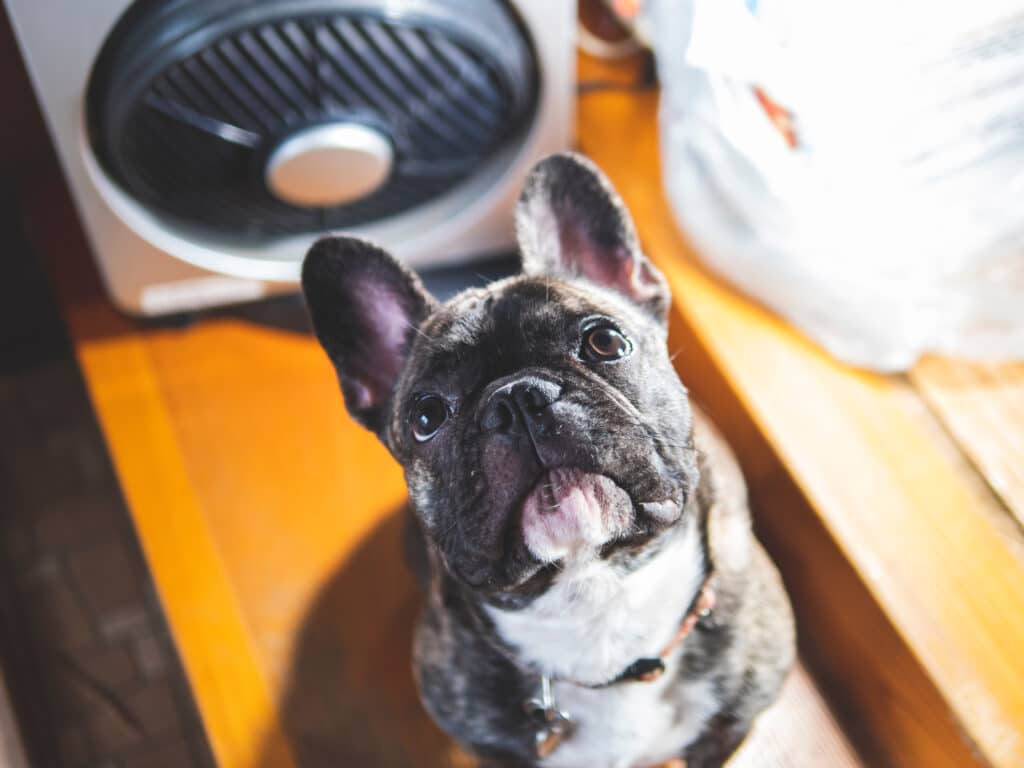
You’ll notice that after playing, exercising or when the weather or season is hot, dogs pant a lot. This is because panting is the dog equivalent of humans sweating when they get too hot and eliminate heat from their bodies.
However, if dogs are unable to reduce their body temperature through panting, it rises and they develop heat stroke, which can be fatal if not dealt with immediately.
According to VCA Hospital, when a dog’s body temperature exceeds 103°F (39.4°C), then it is considered abnormal. When it reaches above 106°F (41°F) without any signs of any other illness, then it is already considered a heat stroke.
And when the body temperature reaches 107°F to 109°F (41.2°C to 42.7°C), then multiple organs will start to fail and death is imminent.
Signs And Symptoms Of Heat Stroke In Dogs
Dogs suffering from heat stroke can show the following signs and symptoms:
- Heavy panting
- Difficulty breathing
- Elevated temperature
- Excessive drooling
- Dry or sticky gums
- Bruising in the gums
- Vomiting
- Diarrhea
- Lethargy or drowsiness
- Uncoordinated movement
- Seizures
What Causes Heat Stroke In Dogs?
A lot of factors cause heat stroke in dogs. But the most common cause is a hot environment. For example, leaving a dog in a car without enough ventilation. Even on a cool day, being left in a car can elevate a dog’s temperature rapidly, often in a matter of minutes, and has deadly consequences.
Other factors that can cause heat stroke in dogs include:
- Physical fitness: Dogs that are not physically fit are prone to heat stroke when they suddenly exert a great amount of energy, especially in a hot environment.
- Weight: Obese or overweight dogs are more susceptible to heat stroke.
- Water: Not drinking enough water can cause a dog’s body temperature to rise.
- Change of weather/season: When the weather changes to summer or when it gets too warm, a dog’s body can have a hard time adjusting to it.
- Breed: Dog breeds that have thick fur, long hair and short noses are more prone to heat stroke.
- Medical disorders: Dogs that suffer from medical problems like hypothyroidism, heart disease, and laryngeal paralysis are predisposed to heatstroke.
6 Dog Breeds Most At Risk Of Heat Stroke
1. Chow Chow
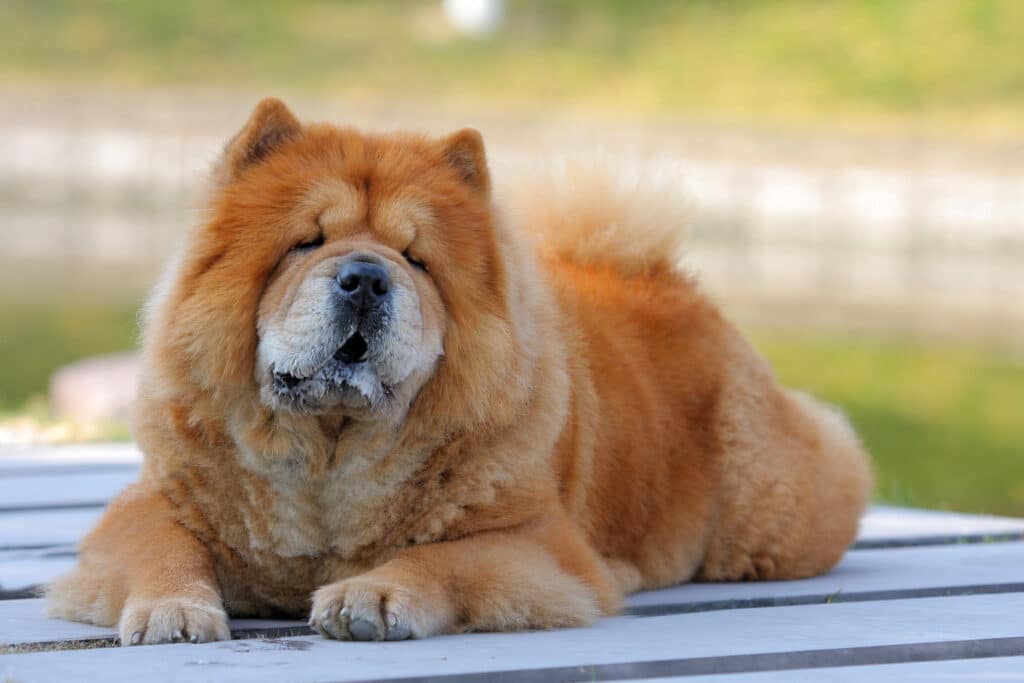

Chow Chows are known to have an extremely thick double coat that can cause them to overheat in the summer.
As a matter of fact, according to a 2020 study conducted by the VetCompass, the Chow Chow is revealed to be 17 times more likely to suffer from heat stroke than any other dog breed.
2. English Bulldog


It’s no surprise that the flat-faced English Bulldog makes it to the list. This breed is known to suffer from brachycephalic airway syndrome. This means these dogs have shorter bones on the face and nose, and therefore have small nasal openings that make it harder for them to breathe.
And during summer, it can be a lot harder for them to breathe, especially if they overexert themselves, making them vulnerable to heat stroke.
3. French Bulldog


French Bulldog is another brachycephalic dog breed that can be at high risk of a heat stroke during the summer months.
Like the English Bulldog, the French Bulldog struggles to breathe due to its flat face and small nostrils, even at rest and even when the weather is cool. After all, effective panting is how dogs eliminate heat from their bodies.
4. French Mastiff
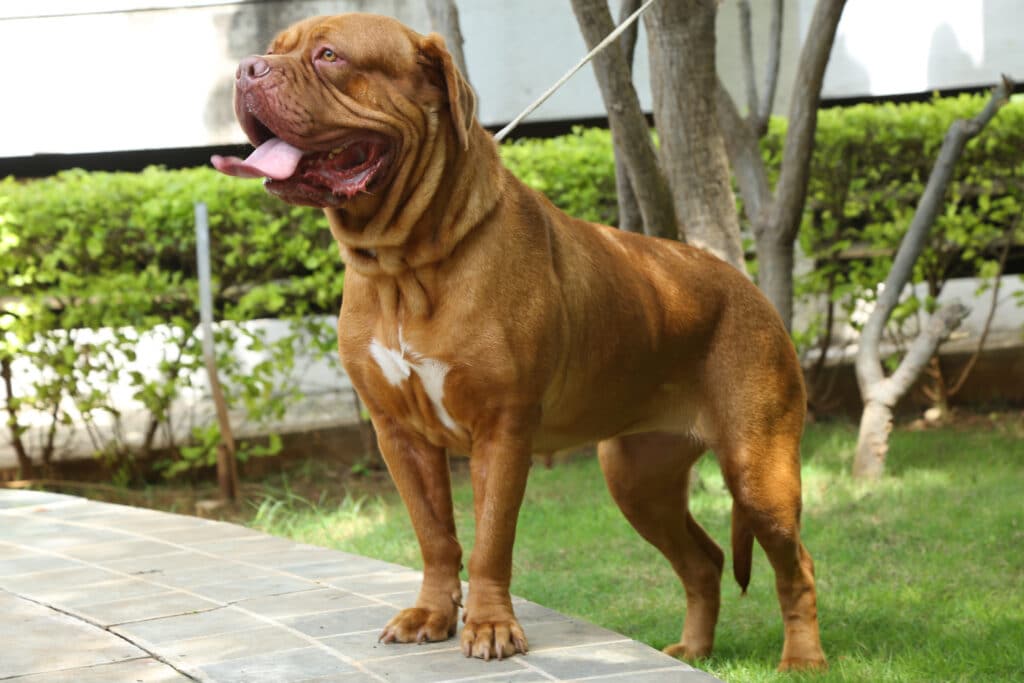

The French Mastiff or Dogue de Bordeaux is another flat-faced dog breed that is at high risk of a heat stroke.
In VetCompass’ 2020 study, data shows that flat-faced dogs are twice as much at risk of suffering from heat stroke as compared to average-snouted breeds.
Furthermore, the French Mastiff’s large and muscular build contributes to its susceptibility. These dogs can weigh around 50kg, which makes them three times more likely to suffer heat stroke than dogs weighing less than 10kg.
5. Greyhound
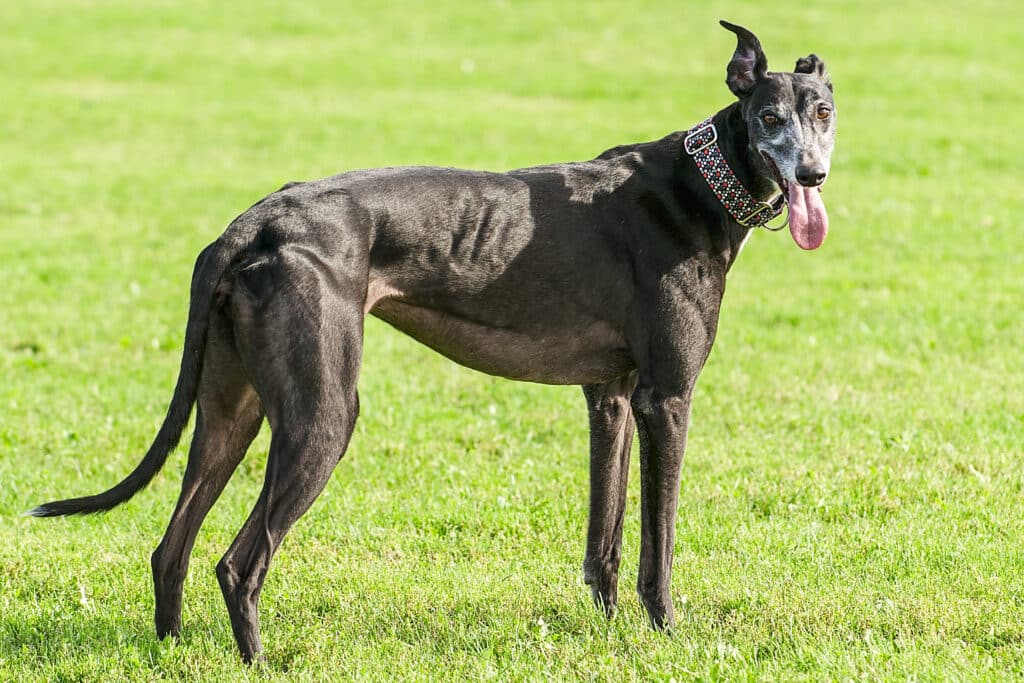

Speaking of a muscular build, the Greyhound is another muscular dog breed that is at high risk of a heat stroke.
According to Cat, a UK vet who is famous on Tiktok, the Greyhound’s ‘large muscle bulk’ which is relative to its body size, is a large contributing factor to their vulnerability to heat stroke. They do not have a lot of body fat and have just one layer of fur, which makes it hard for them insulate themselves against heat.
6. Cavalier King Charles Spaniel


And last on our list is the Cavalier King Charles Spaniel. Heat stroke in dogs is common for breeds that have a flat face, a thick and long coat, and are prone to obesity. And it just so happens that these little angels check all those boxes.
So, if you own one, you need to keep a close eye on them and ensure they are safe and healthy this summer!
How To Prevent Heat Stroke in Dogs
Heat stroke in the summer is a recipe for disaster. And as a dog parent, it’s important to be conscious of the temperature outside before doing any activity with your pooch. Keeping your dog safe in the summer heat is of utmost importance.
Here are ways to prevent heat stroke in dogs this summer:
- When outdoors, make sure you’re in an area with a lot of shade, ventilation and access to drinking water.
- When traveling, make sure to open the windows or the air conditioner for ventilation. And NEVER leave your dog alone inside the car, no matter the circumstance.
- When exercising, make sure to only do it early in the morning or late at night when the temperature is cooler.
- When at home, always keep your dog inside or in areas outside with enough air and shade.
How To Treat Heat Stroke in Dogs
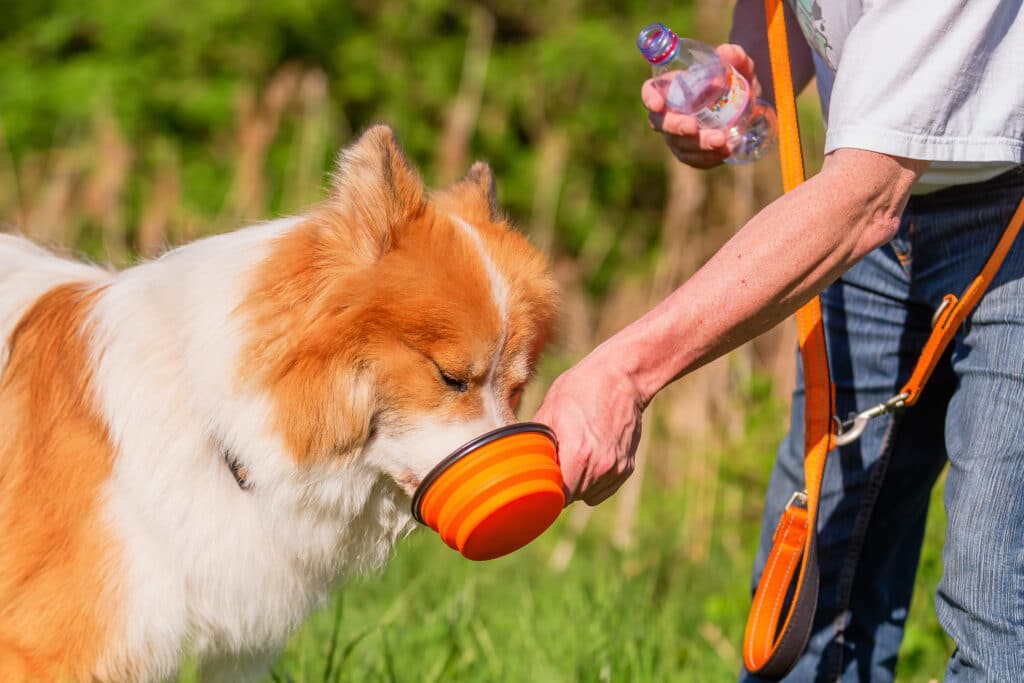

Heat Stroke in dogs can be life-threatening, so it is considered an immediate medical emergency. If you suspect that your dog is suffering from heat stroke, you MUST immediately call the vet and also do your best to lower your dog’s body temperature.
Here’s what you need to do to lower a dog’s body temperature when they’re showing signs of heat stroke:
- Remove the dog from the hot environment and move them to a shaded and cool area.
- Immediately pour cool (NOT cold) water over the dog’s body. Avoid pouring water on their face or they might drown.
- Avoid using ice to cool down your dog. This can only worsen the problem and cause hypothermia.
- If they can, let your dog drink as much cool water.
- Place a wet cloth under your dog. Continually replace the cloth, because if you don’t, it will only trap heat.
- Ensure a continuous flow of air across the dog to help them breathe while evaporating the heat.
- On the way to the vet, make sure to travel with the windows open and/or the air conditioner on.
At the hospital, the vet will treat your dog with intravenous fluid (IV) therapy. They will also monitor and check the dog for any secondary complications they may have developed like kidney failure, changes in their blood pressure and abnormal clotting.
Conclusion
The summer heat is no joke! Heat stroke can be a danger to not only your dog, but to you as well. So knowing the signs and how to deal with it immediately is very important.
You can always make summer fun AND safe for you and your furry friend. Whether it’s a hike, a BBQ party, a day in the beach, you know your dog will be up for it! But it is always up to you to be careful and be conscious of the weather and the consequences it can bring about.
Did your furry friend’s breed make it to the list?



